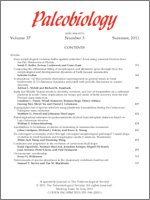Although morphological variation is known to influence the evolutionary fates of species, the relationship between morphological variation and survivorship in the face of extinction-inducing perturbations is poorly understood. Here, we investigate this relationship for veneroid bivalves in association with the Plio-Pleistocene extinction in Florida. Fourteen pairs of related species were selected for analysis, with each pair including one species that survived the Plio-Pleistocene extinction and another that became extinct during the interval. Morphological landmark data were acquired for more than 1500 museum specimens, representing 19 localities that encompass four well-known Plio-Pleistocene units in the study region. Procrustes superimposition was applied to each sample, and overall multivariate variation was calculated as the mean squared partial Procrustes distance between specimens and their mean form. Morphological variation was calculated at three geographic scales for each species, and differences in variation between survivors and victims were examined within each species pair. Results indicate that species surviving the Plio-Pleistocene extinction were significantly more variable morphologically than victims. Greater morphological variation may promote survivorship by directly enhancing species adaptations to changing conditions or by permitting the occupation of a larger geographic range. Alternatively, high morphological variation and survivorship may both be mediated by a third variable, such as large geographic range.
How to translate text using browser tools
1 June 2011
Does morphological variation buffer against extinction? A test using veneroid bivalves from the Plio-Pleistocene of Florida
Sarah E. Kolbe,
Rowan Lockwood,
Gene Hunt
ACCESS THE FULL ARTICLE

Paleobiology
Vol. 37 • No. 3
Summer 2011
Vol. 37 • No. 3
Summer 2011




